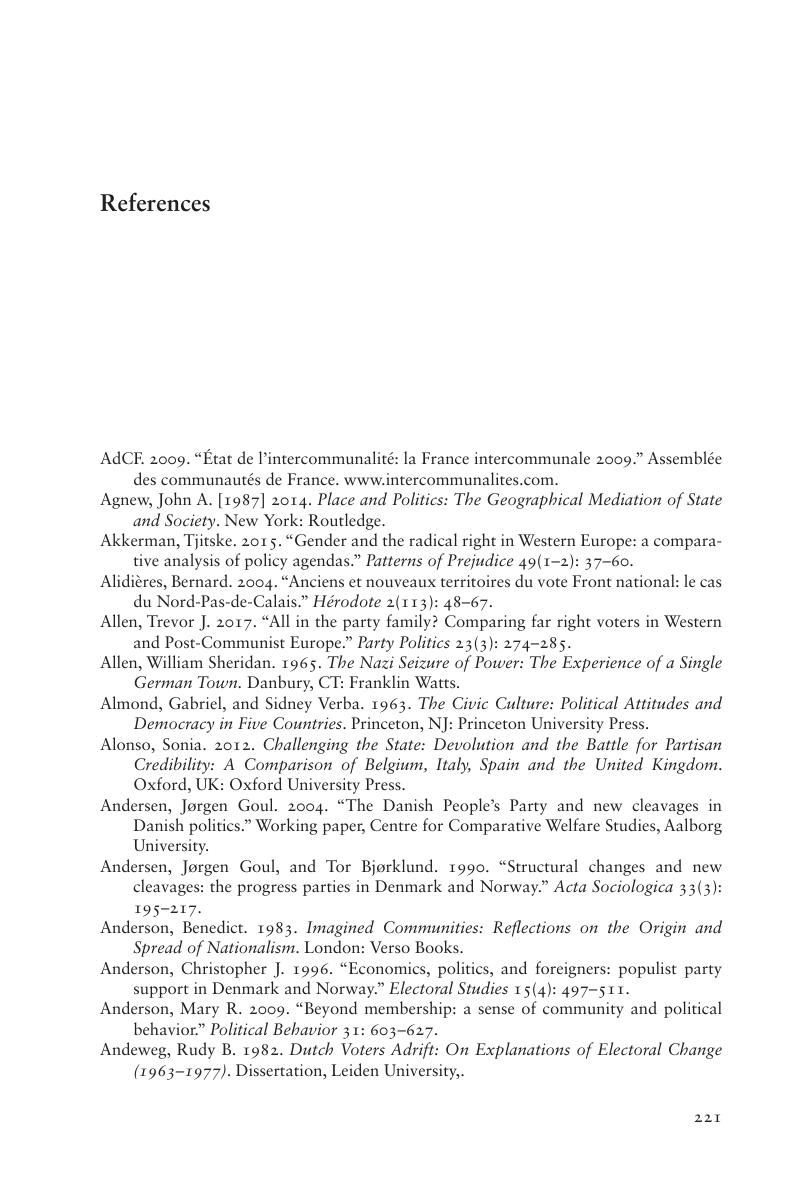Book contents
- Close to Home
- Cambridge Studies in Public Opinion and Political Psychology
- Close to Home
- Copyright page
- Dedication
- Contents
- Figures
- Tables
- Acknowledgments
- 1 Electoral Disorder, Social Change: An Introduction
- 2 Theorizing Localism and Radical Right Support
- 3 Localism and Radical Right Support in Europe*
- 4 Who Are the Localists that Support the Radical Right?
- 5 Neighborly Ties, Local Autonomy, and SVP Support in Switzerland
- 6 Local Autonomy Shifts, Local Cohesion, and Le Pen Support in France*
- 7 Local Political Salience and Radical Right Party Success in OECD Countries*
- 8 Place, Change, Status, and Politics: Concluding Considerations
- Appendices
- References
- Index
- Cambridge Studies in Public Opinion and Political Psychology
- References
References
Published online by Cambridge University Press: 14 September 2018
- Close to Home
- Cambridge Studies in Public Opinion and Political Psychology
- Close to Home
- Copyright page
- Dedication
- Contents
- Figures
- Tables
- Acknowledgments
- 1 Electoral Disorder, Social Change: An Introduction
- 2 Theorizing Localism and Radical Right Support
- 3 Localism and Radical Right Support in Europe*
- 4 Who Are the Localists that Support the Radical Right?
- 5 Neighborly Ties, Local Autonomy, and SVP Support in Switzerland
- 6 Local Autonomy Shifts, Local Cohesion, and Le Pen Support in France*
- 7 Local Political Salience and Radical Right Party Success in OECD Countries*
- 8 Place, Change, Status, and Politics: Concluding Considerations
- Appendices
- References
- Index
- Cambridge Studies in Public Opinion and Political Psychology
- References
Summary

- Type
- Chapter
- Information
- Close to HomeLocal Ties and Voting Radical Right in Europe, pp. 221 - 242Publisher: Cambridge University PressPrint publication year: 2018



